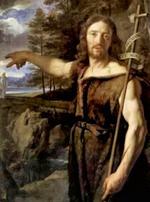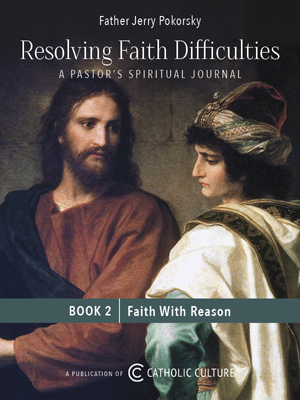Catholic Prayer: Christmas Masses
Description:
This explains the different Christmas Masses, such as the Midnight Mass and Mass at Dawn, and some traditions attached to these celebrations. Although some of the references refer to the pre-Vatican II readings of the Mass, most are still the same and still applicable.
Prayer:
Christmas Day begins in a very special way with the Midnight Mass. Having this first of the Christmas Masses in the middle of the night is an old custom in the Church and is full of significance. In the first place it corresponds with the traditional belief that Christ was born at midnight. Secondly, from the material darkness around us, we are reminded of the spiritual darkness in the world which only Christ the Light can dispel.
The Midnight Mass is surrounded by family traditions which vary according to national heritage or personal preference. There is, for instance, one delightful way of waking the younger children for Mass. Some member of the family dressed as an angel and carrying a lighted candle, goes to each bed and sings a carol.
After Mass many people share a special breakfast with their family. The French are especially fond of this night meal or reveillon, and serve their own traditional dishes. Other families place the Christ-Child in the crib on their return, and often the head of the family reads the Gospel aloud at the crib or at the breakfast table. This time after Mass also lends itself to the singing of carols and the quiet re-explanation of the Christmas story which children never tire of hearing.
The second Mass of Christmas Day is the Mass at dawn, traditionally called the Shepherds' Mass. Just as the shepherds went eagerly to the crib to adore the Lord and to receive His great gift of light, so we also go to the altar where the same Lord comes just as truly to us. The theme of light is prominent in this Mass. Outside, the natural light is increasing. In Bethlehem the Light is manifested to a few more men. Over and over in the Mass texts light is mentioned: The Introit begins, "A Light shall shine upon us this day; for the Lord is born to us." These words can be read again at home, perhaps at the lighting of the Christ-Candle. (See The Christ-Candle for explanation of the candle.)
Because the feast of Christmas is so great, the Church does not stop rejoicing after one or even two special Masses. She continues her worship with a third, the Mass of the Day. In this Mass, our attention is directed towards the divinity of the Child born in Bethlehem. We rejoice in His governing power and wisdom in the Introit. The Epistle refers us back to the Midnight Mass with the passage: "Thou art My Son, today have I begotten Thee." The progressive manifestation of Christ continues. From swaddling clothes and a lowly stable we move to might and majesty, throne and sceptre. From the adoration of Mary and Joseph and a few shepherds, we go to the adoration of all the earth. The great feast of Christ's manifestation, the Epiphany, is foreshadowed in the Gradual and Communion when we say, "All the ends of the earth have seen the salvation of our God."
It is natural that Christian families, in the spirit of the Masses, feel a desire to continue expressing their joy throughout the whole of Christmas Day. This expression takes varied forms.
Prayer Source: Twelve Days of Christmas, The by Elsa Chaney, The Liturgical Press, Collegeville, MN, 1955





